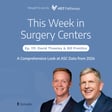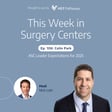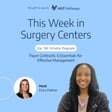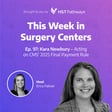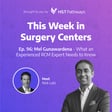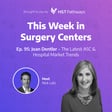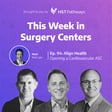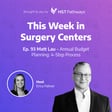
Matt Kraemer - Should Your ASC Accept Every Case?
Should your surgery center accept every case that it can? Or should you be more selective? Matt Kraemer is the Administrator of Northern Arizona Healthcare's Surgery Center, and we sat down to chat through various scenarios where it might be in your surgery center's best interest to say no. He's sharing why this is important, their decision-making approach, and the results that they've seen so far.
In our news recap, we'll cover a study that compared ChatGPT's responses against physician responses, the importance of discussing transportation with every patient, what will disrupt the ASC industry next, and of course, end the news segment with a positive story about a NICU nurse who adopted a teen and her triplets.
One final note - if you are attending the ASCA Conference in Louisville from May 17-20th, stop by HST Pathways' booth to say hello! During exhibit hall hours, I'll be holding short interviews with people right in the booth, and we're going to compile all the great responses we get and use them for an upcoming episode that will air in late May. So if you want to share your expertise with our listeners, it will only take a few minutes, so come find HST Pathways at Booth 519.
Articles Mentioned:
ChatGPT Outperforms Doctors In Answering Patient Messages, Study Shows
Without vehicle or viable public transit, 1 in 5 miss needed healthcare: report
What will disrupt the ASC industry next?
NICU Nurse Katrina Mullen Adopts Teen Mom Who Delivered Triplets Alone
Brought to you by HST Pathways.

